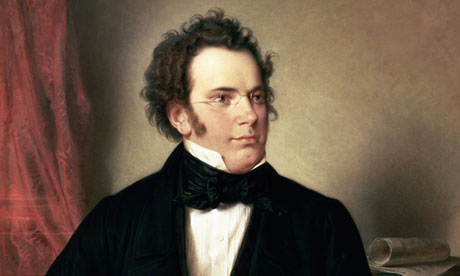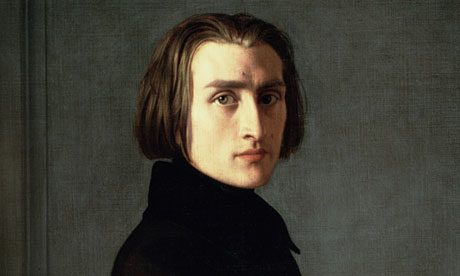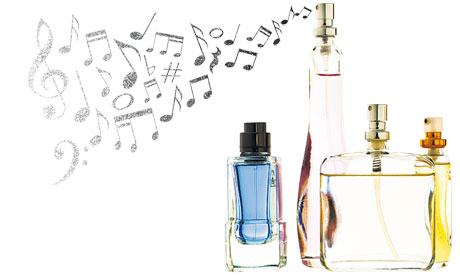Mozart pleases his public

The years 1650 to 1750 were a period of feverish invention and technical ingenuity in music that reached an apotheosis in Handel’s sublime oratorios and Bach’s cantatas and Passions. Bach was probably the cleverest composer who ever lived; the mind-boggling complexity of much of his late music, in particular, has yet to be matched by any composer. But, as often happens in musical history, the generation after Bach stripped away much of the older composers’ harmonic complexity, writing instead with a dramatically simpler palette of harmonies. The likes of Gluck, Mozart and Haydn created a whole new style based on, essentially, four major chords. Much of their music is based on the tonic, dominant and subdominant – just like much of rock’n’roll. Status Quo and the Ramones, say, have shown that the old formulas are the best. Some of Mozart’s most memorable tunes in his opera The Magic Flute are based on very simple harmonic blocks of three or four chords.
Mozart – unlike most composers before him – was able to make a living independent of an institution or a single aristocratic patron, but he lived or died by what the public wanted to hear. If people came to hear one of his operas a second time, he made more money on receipts. He twigged that great tunes were what people were drawn to, and that if he enticed and delighted his audience he was more likely not only to get another commission, but also people were more likely to return to hear his works a second and third time if his tunes were memorable.
Mozart was a melodic genius. The perfection of the shape of his tunes is what strikes me, his wonderful sense of the rise and fall of a tune and what makes it catch the ear. Those great melodies embed themselves in our heads. This gift for melodies is very rare. I think Mendelssohn, too, a century later, was a composer who had an incredibly easy natural gift and wrote some very nice tunes. In my lifetime? Carole King has written beautiful songs, but only a handful. Richard Rodgers was someone who couldn’t not write a decent tune. But if you want the sheer unstoppable flow of Mozart, or Schubert, then you only have Lennon and McCartney.
Schubert invents the three-minute pop song
Most pop songs are based on a dozen or so of the most familiar chord sequences that were “discovered” in the late 18th century. In the present age, someone such as Adele is an original singer because of her voice, her attitude and her style. But the chords and sequences she and most pop writers are using have been around for a very long time. Perhaps the originator of the three-minute pop song was John Dowland, way back in Shakespeare’s time, but I think the modern pop song was created by Schubert.
Schubert was a remarkable talent. Melodies poured out of him. He wrote 600 songs, and, like today’s songwriters, his intention was to write music that would be instantly enjoyable. There’s not a moment where he is trying to catch you out or where you have to listen 10 times before you get your head around a song. He wants you to get it first time; there’s verse-chorus, voice and piano underneath, and he wants you to remember the chorus.
Some of these simple rules of songwriting just continue to be the simple rules of songwriting, and there’s nothing much about Adele or Simon & Garfunkel or Leonard Cohen’s songs that would have seemed alien to the Viennese composer in terms of the chords, or the shape, the way the verse leads into the chorus, or the piano accompaniment. In fact, the thing that would strike Schubert as most odd about an Adele song is the fact that a woman wrote it rather than being its object.
Schubert came to many of the same conclusions as modern songwriters – that writing random song after song is no use, that creating 20 songs and a journey is a much more satisfying form. And so that’s what he did with his song cycles. They are longer pieces where people go on a journey and each song forms the next bit of the story.
The fact is that if you strip that all away and ask what it is he is trying to do, he’s trying to write songs about love (or, let’s face it, unrequited love) or trying to get to grips with the mysteries of life – and do so in a way that is instantly enjoyable. He was a young man (by our standards, very young) so there is some naivety to the songs and there’s a delicacy which, for some people, doesn’t fit in with the modern world. But leaving that aside, he is trying to create something that is instantly liked by lots of people and enjoyed by them either in their own homes or in a salon.
Adele, singer, 2011 Adele’s voice and style make her an original. But the chords and sequences she uses have been around for a very long time. Photograph: Rex Features
That is not really very different from what Adele is doing. Her songs are based on a piano format, with verse-chorus, addressing the issue of love and romance and shaping the voice around that; emotions are expressed; the length; the format – Adele wants her songs to be instantly enjoyed.
Beethoven and the cult of the turbulent genius
Beethoven changed the point of what music was. He and his music became indivisible: it was a reflection of his inner turmoil. His work sits at the time of a broader cultural movement where artists and poets were doing the same, but what became a musical commonplace was begun by him. Seventies groups such as Yes and Pink Floyd tried to do the same thing and express big ideas in instrumental sections on concept albums.
Generally, Beethoven’s impact has been felt much more strongly in classical music than in pop, because he wrote about his emotions without words. When, at the end of his life, he writes his desperately bleak and private string quartets, it’s like having a pscyhoanalytic session with him.
But the cult of the isolated, divine or demonic genius – of which Beethoven was the first outstanding musical example – was developed to a whole new level by Berlioz. We have this French composer to thank for the image of the deranged, hair-challenged, isolated composer, one that persists to this day. He himself was a borderline psychopath at the forefront of the mid-19th century’s obsession with doomed love, death and destiny, and wrote music on an epic scale, music that would embrace all of life. He was obsessed with Beethoven – as we still are today, possibly to too great an extent. We’ve constructed this great building of Beethoven-the-man on top of his music, but if you strip that away and ask what’s going on in this music, it’s not always the same thing.
Franz Liszt Franz Liszt as a young man: the key composer of the 19th century, who turbo-charged music. Photograph: Archivo Iconografico/Corbis
Liszt lets music tell the story

Beethoven developed the idea that you can tell a story in music. In his Pastoral Symphony he goes for a walk in the country; he sees peasants merry-making, there’s a thunderstorm … but that piece is all about the composer, his feelings and his responses. Liszt, however, created the concept that the music itself could tell the story. He moved away from the idea of music as an abstract entity towards orchestral music as a representation of something extra-musical with his symphonic poems. Tasso, Lamento e Trionfo followed the path of an actual period in the life of the 16th-century Italian poet – even weaving in a traditional gondoliers’ folk song and creating an anguished first section about the mental asylum where Tasso was imprisoned for a while. The form of the piece was, crucially, dictated by the story. The climax of his Hunnenschlacht (The Battle of the Huns), devoted to Kaulbach’s 1850 painting of Attila the Hun’s battle against the Christian Roman empire, contains the kind of heavyweight flourish you have heard in the scores of countless Hollywood adventure films. In his tone poems, Liszt provided the template for generations of film composers. If I was scoring a battle scene for a film, I would use many of the techniques that Liszt first employed. His influence is enormous, and he had a huge effect on music in the late 19th and early 20th centuries – so much so that I find myself wondering why we don’t love him better today. I think it comes down to the fact that he wasn’t a natural melodist. But to my mind, Liszt is the giant, the key composer of the 19th century, one who turbo-charged music.
Dvorák’s sampling sparks a debate
Composers have always borrowed elements from each other and from ethnic music. Music doesn’t observe racial or national boundaries. Can you “own” it? Nowhere were the moral questions surrounding this more sharply highlighted that in the US in the late 19th century, where the Czech composer Dvorák found himself at the centre of a highly divisive debate. The source melodies for his New World symphony were borrowed – whether deliberately or absorbed unconsciously – from Native American and African American folk songs, which raised the question of whether it is legitimate to plunder the music of another community’s cultural inheritance and place it in an alien and artificial milieu for a very different audience.
Dvorák had only good intentions – the ennobling of African American culture – but it’s important not to see a piece of music isolated from its times. His symphony was written during a period when everything that belonged to Native Americans and African Americans was deliberately being taken away from them by a white culture – and a work by a European composer performed in a New York concert hall was at that time a piece of white culture.
We may never know who wrote the tunes in Dvorák’s symphony – maybe he wrote every note himself. But the conundrums are there nonetheless because it became so commonplace for white musicians to rip off the music of black people. Three decades later, Gershwin, with his Rhapsody in Blue, found himself at the centre of a related debate when his incorporation of jazz – perceived as grubby, street music – outraged middle-class concert-goers.
Today, there are people who are antagonistic to popular culture of all kinds, who rant about how there’s nothing good on TV, that young people’s tastes, habits and fashions are all repellent to them. But it was ever thus. For a “serious” composer such as Gershwin to put jazz into a piece of classical music was deeply threatening and played to a fear that, somehow, it would pollute “serious” music. But you can’t make styles stay apart. They will come together no matter what.
As told to Imogen Tilden.
Original Story – Guardian
Like this:
Like Loading...











